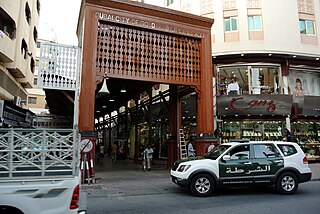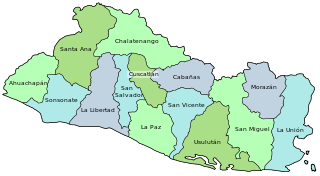
Sex trafficking is human trafficking for the purpose of sexual exploitation. It has been called a form of modern slavery because of the way victims are forced into sexual acts non-consensually, in a form of sexual slavery. Perpetrators of the crime are called sex traffickers or pimps—people who manipulate victims to engage in various forms of commercial sex with paying customers. Sex traffickers use force, fraud, and coercion as they recruit, transport, and provide their victims as prostitutes. Sometimes victims are brought into a situation of dependency on their trafficker(s), financially or emotionally. Every aspect of sex trafficking is considered a crime, from acquisition to transportation and exploitation of victims. This includes any sexual exploitation of adults or minors, including child sex tourism (CST) and domestic minor sex trafficking (DMST).

Crime is one of the most urgent concerns facing Mexico, as Mexican drug trafficking rings play a major role in the flow of cocaine, methamphetamine, fentanyl, heroin, and marijuana transiting between Latin America and the United States. Drug trafficking has led to corruption, which has had a deleterious effect on Mexico's Federal Representative Republic. Drug trafficking and organized crime have been a major source of violent crime. Drug cartels and gangs have also branched out to conduct alternative illegal activities for profit, including sex trafficking in Mexico. Some of the most increasingly violent states in Mexico in 2020 included Guanajuato, Zacatecas, Michoacán, Jalisco, and Querétaro. Some of the world's most violent cities are reportedly within the state of Guanajuato with extortion from criminal groups now being commonplace. The state of Zacatecas is said to be valuable to multiple organized crime groups for drug trafficking, specifically methamphetamine to the United States. As of 2021, Michoacán is experiencing increased instances of extortion and kidnapping due to a growing presence and escalation in the armed conflicts between CJNG and Cárteles Unidos on regions bordering the neighboring state of Jalisco. CJNG is also currently battling the Los Chapitos faction of the Sinaloa Cartel in the North Mexican region of Sonora.
Prostitution in Greece is legal at the age of 18, and regulated. It is estimated that fewer than 1,000 women are legally employed as prostitutes and approximately 20,000 women, half of whom are of foreign origin and the other half are Greek, are engaged in illegal prostitution. Many women affected by the economic crisis have turned to prostitution through poverty.

Crime in Russia refers to the multivalent issues of organized crime, extensive political and police corruption, and all aspects of criminality at play in Russia. Violent crime in Siberia is much more apparent than in Western Russia.

Crime and violence affect the lives of millions of people in Latin America. Some consider social inequality to be a major contributing factor to levels of violence in Latin America, where the state fails to prevent crime and organized crime takes over State control in areas where the State is unable to assist the society such as in impoverished communities. In the years following the transitions from authoritarianism to democracy, crime and violence have become major problems in Latin America. The region experienced more than 2.5 million murders between 2000 and 2017. Several studies indicated the existence of an epidemic in the region; the Pan American Health Organization called violence in Latin America "the social pandemic of the 20th century." Apart from the direct human cost, the rise in crime and violence has imposed significant social costs and has made much more difficult the processes of economic and social development, democratic consolidation and regional integration in the Americas.
Efforts to crack down on human trafficking in Russia focus not only on the men, women, and children who are illegally shipped out of Russia to undergo forced labor and sexual exploitation in other countries, but also those who are illegally brought into Russia from abroad. The Government of the Russian Federation has made significant progress in this area over the past decade, but a report commissioned by the United States Department of State in 2010 concluded that much more needed to be done before Russia could be taken off its Tier 3 watchlist. U.S. State Department's Office to Monitor and Combat Trafficking in Persons placed the country in "Tier 3" in 2017.
Prostitution in Moldova is an illegal activity but is widespread and socially acceptable. UNAIDS estimate there to be 12,000 prostitutes in the country.
Slovenia is a transit, destination, and to a lesser extent a source country for men, women, and children trafficked from Ukraine, Slovakia, Romania, Moldova, Bulgaria, Colombia, the Dominican Republic, Turkey, Albania, and Montenegro for the purposes of commercial sexual exploitation and forced labor, including in the construction industry. In 2007, disabled men from Slovakia were trafficked to Slovenia for the purpose of forced begging. Slovenian women are trafficked within the country or to other European countries for commercial sexual exploitation. The Government of Slovenia fully complies with the minimum standards for the elimination of trafficking. The government sustained its strong law enforcement efforts and generous victim assistance funding during the reporting period. In 2007, Slovenia increased funding for victim assistance from $85,000 to $105,000. The government also increased and diversified its public awareness efforts.
Uzbekistan is a source country for women and girls who are trafficked to the United Arab Emirates (U.A.E.), Kazakhstan, Russia, Thailand, Turkey, India, Indonesia, Israel, Malaysia, South Korea, Japan and Costa Rica for the purpose of commercial sexual exploitation. Men are trafficked to Kazakhstan and Russia for purposes of forced labor in the construction, cotton and tobacco industries. Men and women are also trafficked internally for the purposes of domestic servitude, forced labor in the agricultural and construction industries, and for commercial sexual exploitation. Many school-age children are forced to work in the cotton harvest each year.

The crime rate in the United Arab Emirates is relatively low compared to more highly industrialized nations. Incidents of petty crime such as pickpocketing are low. The United States Department of State states: "Crime generally is not a problem for travelers in the UAE. However, the U.S. Embassy advises U.S. citizens to take normal precautions against theft, such as not leaving a wallet, purse, or credit card unattended. Although vehicle break-ins in the UAE are rare, U.S. citizens are encouraged to ensure that unattended vehicles are locked and that valuables are not left out in plain sight".

Slovakia is a Central European country with a history of relatively low crime. While crime became more widespread after the Revolutions of 1989, it remains low when compared to many other post-communist countries.

Papua New Guinea is a source, destination, and transit country for men, women, and children subjected to trafficking in persons, specifically forced prostitution and forced labor. Women and children are subjected to commercial sexual exploitation and involuntary domestic servitude; trafficked men are forced to provide labor in logging and mining camps. Children, especially young girls from tribal areas, are most vulnerable to being pushed into commercial sexual exploitation or forced labor by members of their immediate family or tribe. Families traditionally sell girls into forced marriages to settle their debts, leaving them vulnerable to involuntary domestic servitude, and tribal leaders trade the exploitative labor and service of girls and women for guns and political advantage. Young girls sold into marriage are often forced into domestic servitude for the husband’s extended family. In more urban areas, some children from poorer families are prostituted by their parents or sold to brothels. Migrant women and teenage girls from Malaysia, Thailand, China, and the Philippines are subjected to forced prostitution, and men from China are transported to the country for forced labor.

Sex trafficking is defined as the transportation of persons by means of coercion, deception and/or forced into exploitative and slavery-like conditions and is commonly associated with organized crime.

Though the Cuban government does not release official crime statistics, Cuba is considered one of the safer countries in Latin America. Gun crime is virtually nonexistent, drug trafficking has been largely curtailed, and there is below-average crisis intervention from police. Murder rates are also below those of most Latin American countries, with an intentional homicide rate of 5.00/100,000 inhabitants in 2016, lower than any other country in the region.
According to the data given by the United Nations Office on Drugs and Crime, worldwide, 79% of homicide victims are men, and in 193 of the 202 listed countries or regions, men were more likely to be killed than women. In two, the ratio was 50:50, and in the remaining seven – Tonga, Iceland, Japan, New Zealand, South Korea, Latvia, and Hong Kong – women were slightly more likely to be victims of homicides compared to males. A 2000 global study on homicide by the United Nations Office on Drugs and Crime found that men accounted for about 98 percent of all homicide perpetrators worldwide and 79% of the victims. The highest female homicide rate per 100,000 inhabitants was in Honduras and highest male homicide rate per 100,000 inhabitants was in Lesotho.
Sex trafficking in Myanmar is human trafficking for the purpose of sexual exploitation and slavery that occurs in the Republic of the Union of Myanmar. Myanmar is primarily a source and transit country for sexually trafficked persons.

Sex trafficking in Kazakhstan is human trafficking for the purpose of sexual exploitation and slavery that occurs in the Republic of Kazakhstan.

Sex trafficking in Guatemala is human trafficking for the purpose of sexual exploitation and slavery that occurs in the Republic of Guatemala.

Sex trafficking in El Salvador is human trafficking for the purpose of sexual exploitation and slavery that occurs in the Republic of El Salvador. It is a country of origin, transit, and destination for sexually trafficked persons.

Crime in Latvia is relatively low, by global standards, especially compared to previous years, when it was named the "crime capital of Europe" by Forbes in 2008. The homicide rate in Latvia was 4.9 per 100,000 people in 2020, a sharp drop from 10 cases per 100,000 people in 2000, and has been steadily decreasing, but has seen recent increases. The United States Department of State has assessed Latvia's security rating as "medium", with a moderate crime rate. In recent times, crime has been increasing, particularly due to many Latvians stranded because of the COVID-19 pandemic returning to Latvia and choosing to commit crime. According to Interpol, Latvia is considered an attractive place for regional and organized criminals involved in drug trafficking, arms trafficking, human trafficking, or smuggling. According to the Central Statistical Bureau of Latvia, a third of all women in Latvia have suffered some form of sexual violence or rape while men are subjected to violence outside the family.














